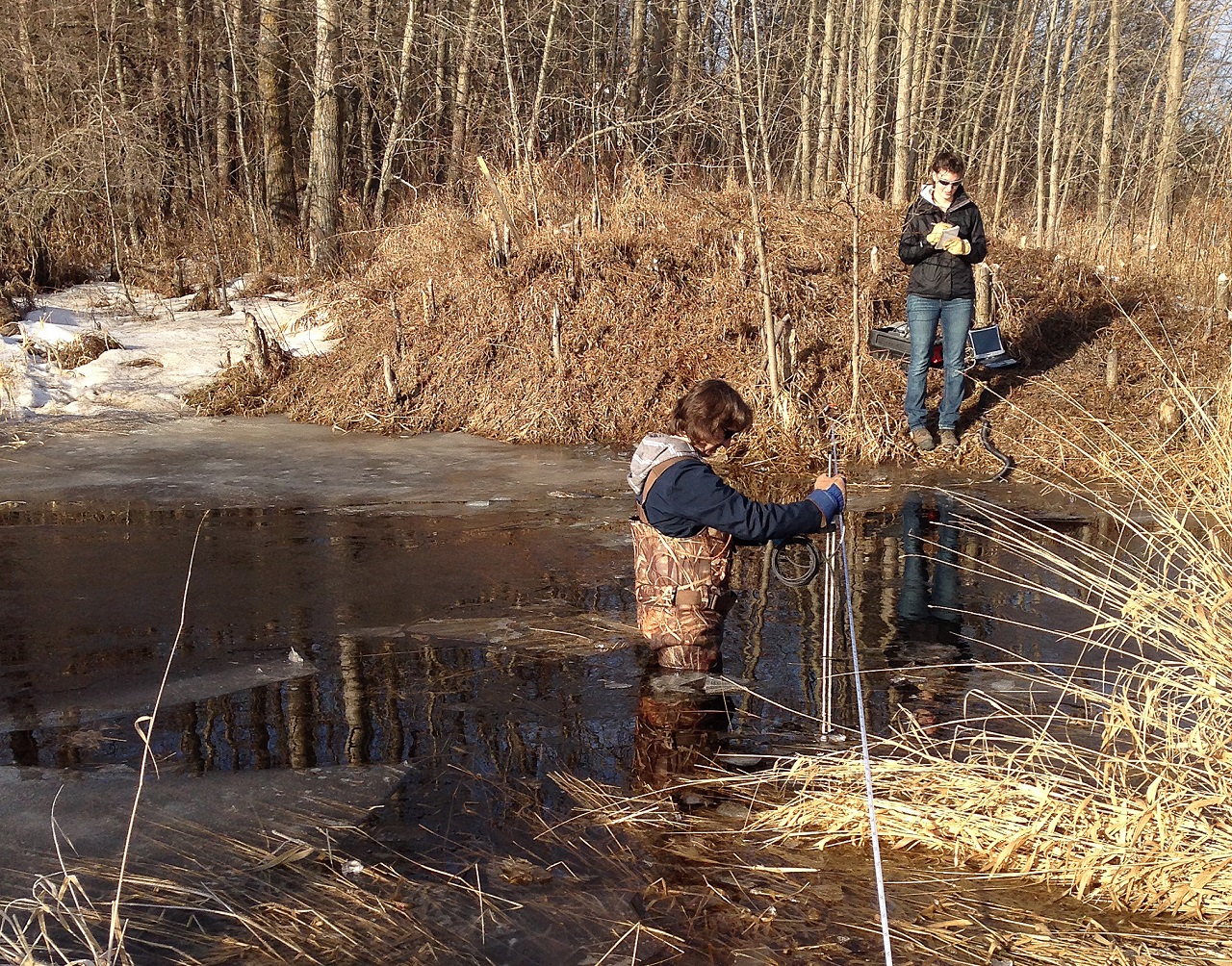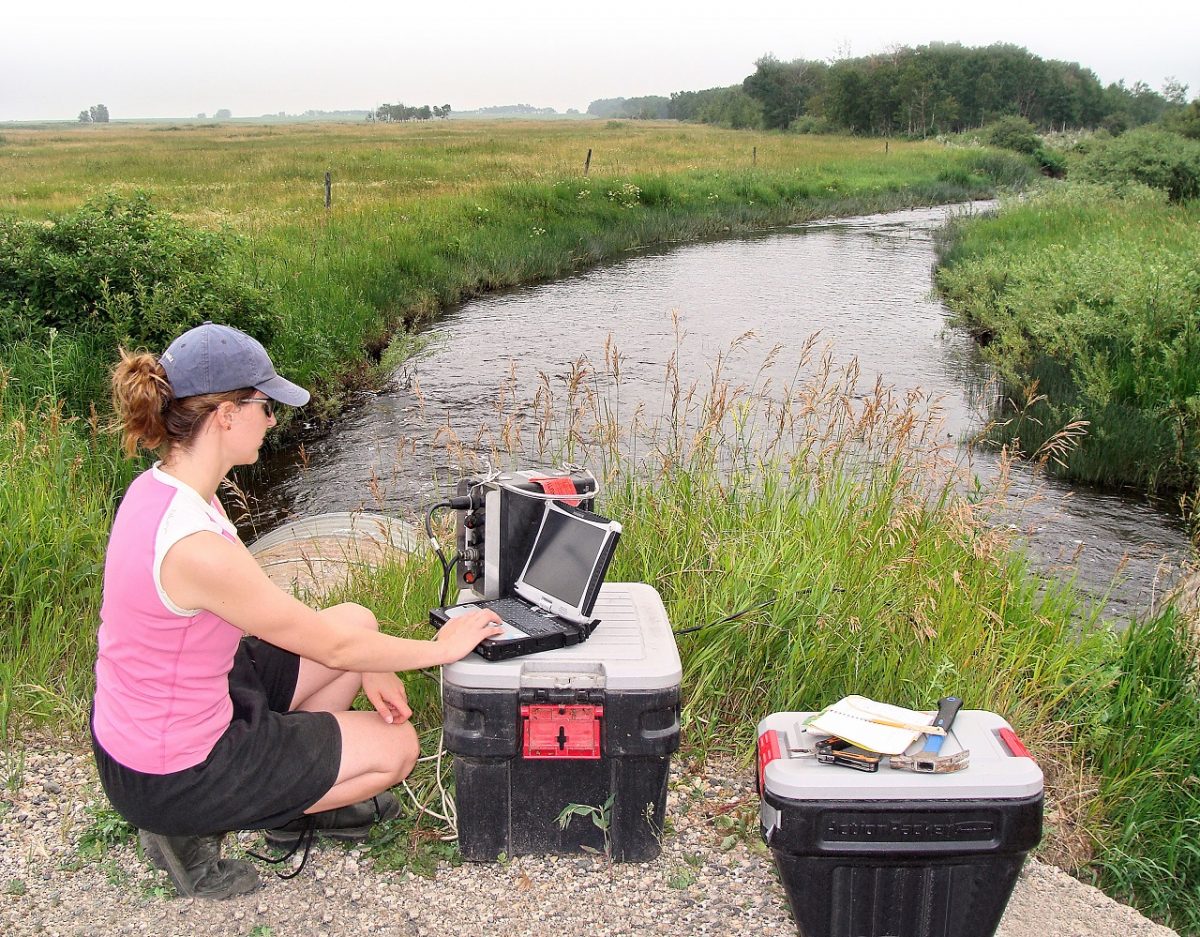Everything flows downstream
Research projects will show what’s entering Prairie watersheds, and the role of nature in protecting water quality

“Like kids and puddles – I have an unbreakable attraction to aquatic ecosystems,” says Pascal Badiou, a research scientist with DUC’s Institute for Wetland and Waterfowl Research.
For more than a decade, Badiou’s expertise in water – and more specifically, what’s in the water – has been nurtured on the rich landscape of the Prairies. This spring, his research team will complete their third and final year of monitoring at Camrose Creek in Alberta’s parkland region. Their findings will be compared with recent research at Broughton’s Creek in Manitoba and Smith Creek in Saskatchewan.
“Canadian Prairie wetlands are the single most understudied aquatic ecosystem in the world,” says Badiou. “Our previous work has shown that wetlands are great at dealing with contaminants. We need to continue to quantify just how important these systems are for regulating the quality and quantity of our water.”
The research at Camrose Creek was challenging in the first two years. Minimal snowpack meant there was little water running off the land. A more significant snowpack this year will give the team their best opportunity to monitor water headed downstream.
What’s in the Water
Existing research shows that wetlands help improve water quality by removing pollutants contained in run-off. These are broken down, consumed and stored within wetland vegetation and sediment, sending cleaner water downstream.
“Wetlands in cropland generally have high levels of nitrogen, phosphorus and pesticides, relative to wetlands in grasslands and pastures,” says Badiou. “This demonstrates the importance of keeping those wetlands on the landscape, in terms of mitigating pollution from cropland.”
As contaminant levels increase, communities can experience other water quality concerns, too.
“We know that wetland drainage increases the amount of nutrients sent downstream. That has the potential to cause other water quality issues. Think of the algae blooms we see in Lake Winnipeg, Lake Diefenbaker and Pigeon Lake,” says Badiou. “It’s happening all across the Prairies.”

© DUC
Linking the Science
By researching these small watersheds, Badiou aims to better demonstrate what happens when people make changes to the Prairie’s natural systems, such as draining wetlands. He says that by having data with touchpoints in all three provinces, science can better demonstrate the importance of wetlands to the entire region.
“Regardless of where you are in the larger watershed, wetland drainage can impact you,” he says.



